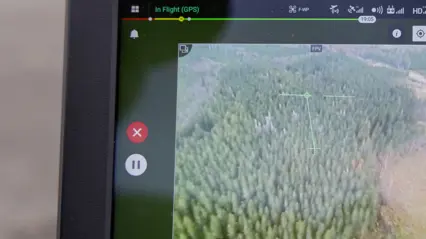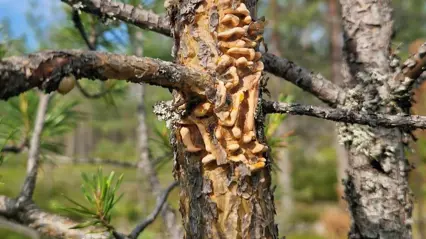We prevent and monitor forest damage
Newsletter
Knowledge gaps about forest damage in Sweden

Analyst function
The analysis function is an important part of the SLU Forest Damage Centre. Our analysts investigate the risk for national outbreaks, compile knowledge and provide support in the event of outbreaks or other incidents.

Research school
The SLU Forest Damage Centre's research school trains doctoral students to get a broad competence in forest damages. Here, you can network with industry and authorities. The research school is open to all doctoral students at SLU.

Monitoring of forest damage
We collect data on damage and populations or agents that cause damage in Swedish forest ecosystems. The data contribute important information to the analysis function within the Centre and governmental work.
Our projects

Skogsskada - Report Tool (swe)
Skogskada is a web-based tool for reporting and identifying forest damage. The tool helps to describe the damage situation in Swedish forests and can be used as a knowledge bank.

Tools and facts
Here you can find information and facts about forest damage. You will also find various tools that can help you. Here we gather knowledge about pests.
-
New hyperspectral drone pushes forest stress monitoring to a new frontier
SLU Forest Damage Centre has expanded its capabilities with Sweden’s first co-aligned VNIR–SWIR–LiDAR hyperspectral drone system for advanced forest stress detection. -
New discovery: How spruce bark beetle infestations can be detected early from the air
For the first time, researchers have detected spruce bark beetle infestations from the air at a very early stage, when the infestation has only affected one side of the tree trunk. The infestations are revealed by light reflections from the needles. -
How moose choose to move in forest landscapes: ”Avoiding areas close to roads”
Most moose prefer to stay in young forests and mixed forests with a high proportion of deciduous trees. But they want to be far away from the nearest road. This is shown by a study from the Swedish University of Agricultural Sciences (SLU), which has mapped moose movements for over 20 years. -
Working together against the emerald ash borer – researchers and authorities met in Krakow
On 16–17 October 2025, 50 participants from 16 countries attended the “EABRACE Workshop – First Year of Baltic Co-partners’ Experience” held at the University of Agriculture in Krakow, Poland. -
Here's where moose and deer find their food – SLU releases unique map
For the first time, there is now a map showing where the forage for deer and moose is located. The maps, produced by researchers at SLU, shows where key tree species for ungulates are found and how much is at grazing height.